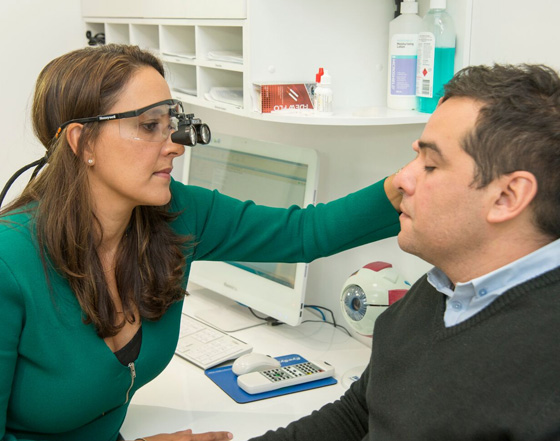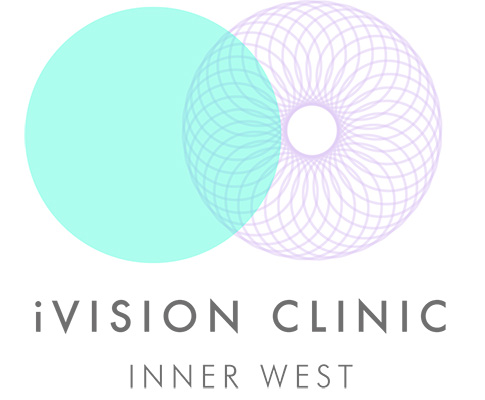What is blepharospasm?
The term blepharospasm describes involuntary eyelid movements. These movements include uncontrolled blinking, eyelid twitches or tics and closing of the eyes.
You can have blepharospasm because you have another condition (secondary blepharospasm). The most common example of this when you feel a flickering or twitching in an eyelid when you’re tired or stressed. Doctors tend to call this type of eyelid movement a tic or twitch rather than blepharospasm.
You can also have blepharospasm by itself (primary blepharospasm). Doctors often reserve the term blepharospasm for this type. It’s also called benign essential blepharospasm (BEB). It tends to be a more severe form of eyelid spasm that may force the eyelids shut, sometimes for hours.
The treatment options will depend on whether you have primary or secondary blepharospasm. If your eyelid spasm is secondary to another condition, we’ll treat that condition. If it’s primary, treatment aims to relax, paralyse or even remove the eyelid muscles.

What causes blepharospasm?
We don’t know the exact cause of primary blepharospasm (or BEB). It’s thought to be a type of nervous system disorder where messages fail to pass between nerve cells in the part of the brain that controls movement. No one knows what causes the message failure. There may be a genetic component.
Secondary blepharospasm may be due to conditions of the eye or conditions of the body (systemic).
Eye causes include:
- Trauma to the eye (especially to the cornea)
- Blepharitis
- Conjunctivitis
- Dry eye
- Glaucoma (less common cause)
Systemic conditions associated with blepharospasm include:
- Tourette’s syndrome
- Tardive dyskinesia
- Multiple sclerosis (uncommon manifestation)
- Focal brain injury or tumour
- Infections (viral encephalitis, Reye’s syndrome, AIDS, tetanus)
- Cerebral palsy
- Adverse drug reactions
What are the symptoms of blepharospasm?
If you have blepharospasm, you may uncontrollably:
- Blink
- Squint
- Wink
- Twitch
- Squeeze your eyes shut
These may occur in one or both eyes. The spasms can even force your eyelids shut for hours at a time. Your eyebrows might also be pulled down as though you’re frowning.
There is often a progression of symptoms over time. At first the spasms may occur in response to certain triggers, such as:
- Bright light
- Reading or watching TV
- Tiredness
- Stress
Over time, the spasms may occur more frequently even when the triggers aren’t present. If the blepharospasm starts in one eye, it is very likely to eventually affect both. The spasms don’t usually occur during the night.
How is blepharospasm diagnosed?
Your GP or eye specialist can diagnose blepharospasm based on your physical examination, medical history and by ruling out other possible causes. There is no special test.
What is the treatment for blepharospasm?
Treating secondary blepharospasm involves treating the underlying cause.
There are several treatments of primary blepharospasm (or BEB).
Muscle relaxation
You may be able to ease the spasms and reduce their frequency by doing things like talking, whistling or concentrating on something else.
Stress management
As stress can be a trigger and worsen symptoms, learning stress management techniques can be helpful.
Botulinum toxin (Botox) injections
‘Botox’ injections are used to paralyse the eyelid muscles and stop the spasms. Your doctor will give several tiny injections both above and below the eye. It takes around a week for the paralysis to be complete and treatment can last up to 4 months.
Around 90% of people who try Botox injections find that it works well for their blepharospasm. Side effects such as dry eyes, drooping eyelids (ptosis) and double or blurry vision are common, but temporary.
Medication
Medications are sometimes tried, but the success rate varies. What works for one person may do nothing for another, so there is no standard treatment.
Surgery
Surgical treatment for blepharospasm involves removing of some (or all) of the eyelid and eyebrow muscles responsible for squinting.
It is usually only performed after Botox therapy has failed.
The procedure is call a myectomy and is done by our specialist eye surgeon. Repeat operations may be needed in some cases.
